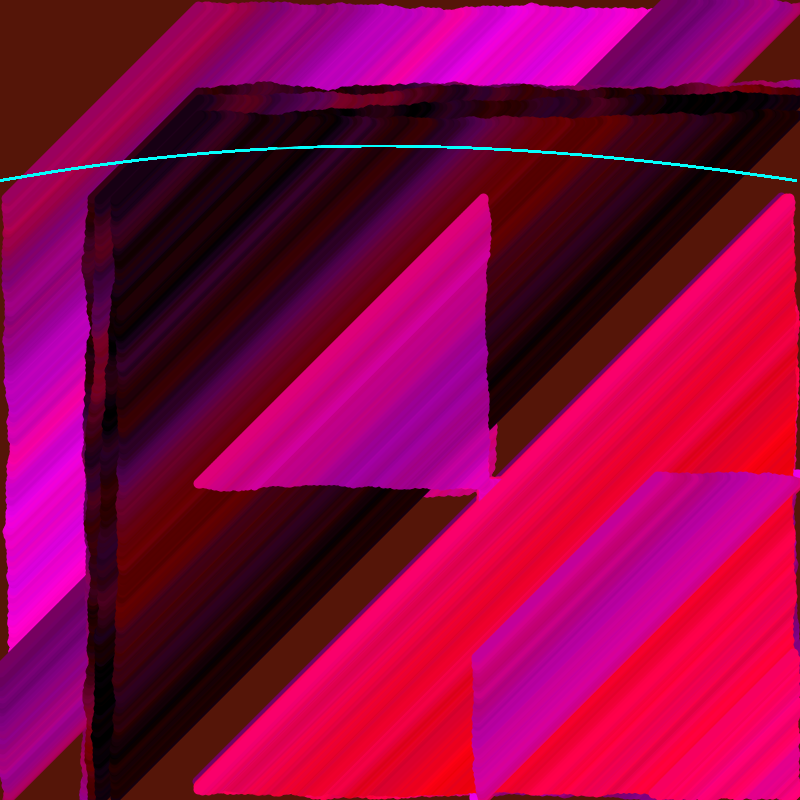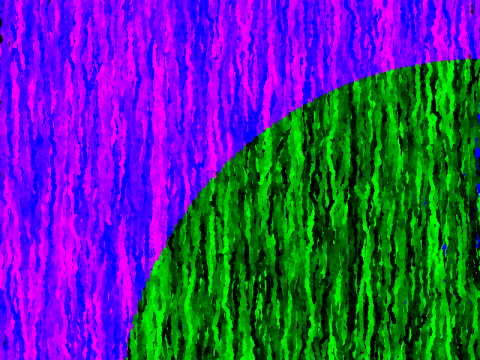I am not very good at math. Some would say that I am, in fact, a menace when it comes to anything more than simple addition. However, I am constantly fascinated by the way math and art combine in code, and the way digital and computational artists use these methods. Like the early pioneer of computer art, Vera Molnar, whose methods of gradualism astound me. In trying to create a piece of art like hers, which is both technically brilliant and aesthetically pleasing.
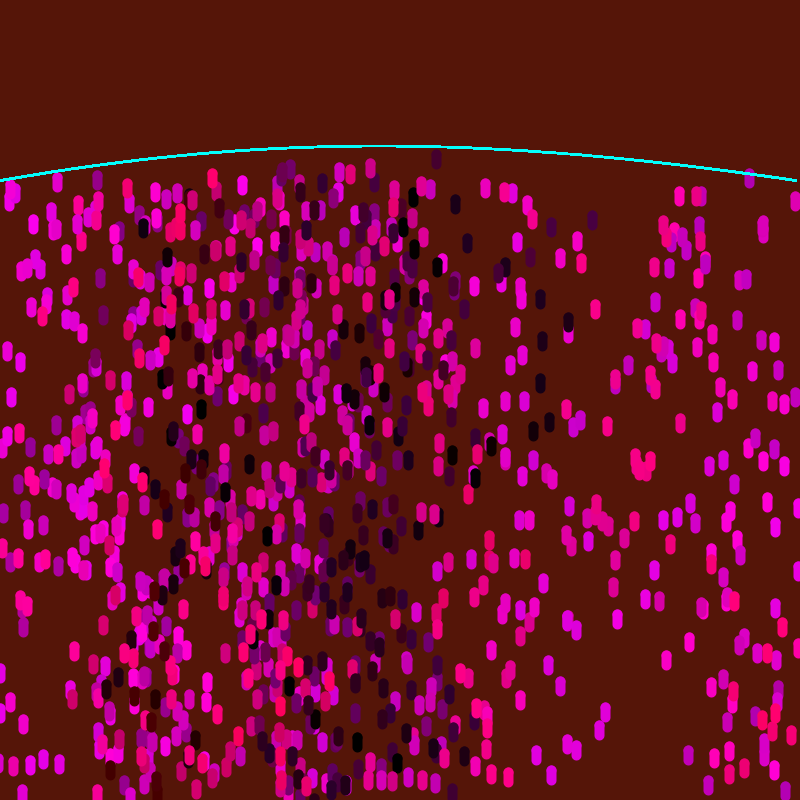
My first attempt at this was simply using points that didn’t surpass the blue line. There are aspects of repetition that lend themselves meaning- after all, repetition in and of itself is meaningful. I know that in fiction writing and poetry repetition is used quite often. While dependent on context, usually it is used to either explicate some sort of point or exaggerate a single line that the reader is supposed to be reminded of constantly. And sometimes in poetry, a single line is repeated over and over but changes as the reader moves down the poem. This reminds me of that same context.

Of course, that repetition means nothing in a single image- even if that image has gradualism in it, the context is better strengthened when compared to other images. That isn’t to say that a single image from a series can’t stand on its own- especially in Vera Molnar’s case, any one of her pieces is worth its weight in digital gold. But these pieces become even more meaningful when compared to others in the same series. I’m not sure why, and it might be purely my own desire to see a set come to completion. I know that the images in my set wouldn’t mean as much without each other.
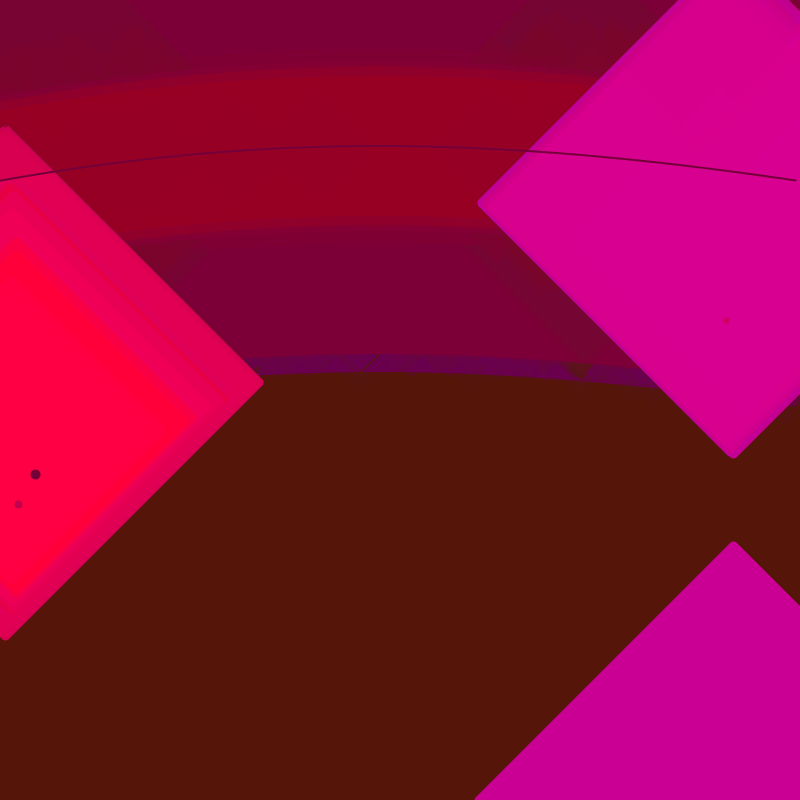
Gradualism wasn’t something I enjoyed doing at first. I wanted the differences between my pieces to be huge- different colors, orientations- even the size of the sketch changed. But this isn’t what gradualism is. Gradualism is the beauty found within subtle changes, a concept that took me a while to understand.
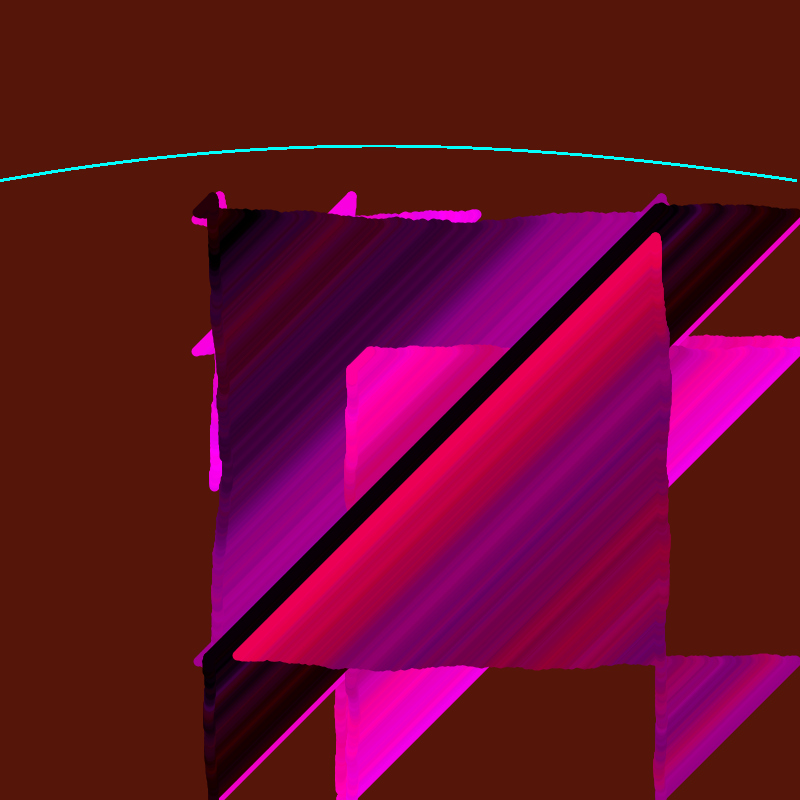
So is there an artist present in these pieces? Or is the process entirely machine made? I believe that there is a collaboration between both entities. Within the machine are endless possibilities, an unlimited amount of tools and resources at the ready. But these functions cannot be executed without an artist to guide it- computational art could exist without computers, but computers could not make computational art on their own. Vera Molnar was working with computational art before computers could even process large amounts of information. Because the design, and the thought behind it, is up to the discretion of the artist. People who believe that computational art is as easy as “clicking a button” clearly don’t understand what methods and imagination are put behind these art pieces. Below is another piece from this series, and the one I enjoy the most- I think it best exemplifies the concept of gradualism, as it is only slightly different from the one above.
